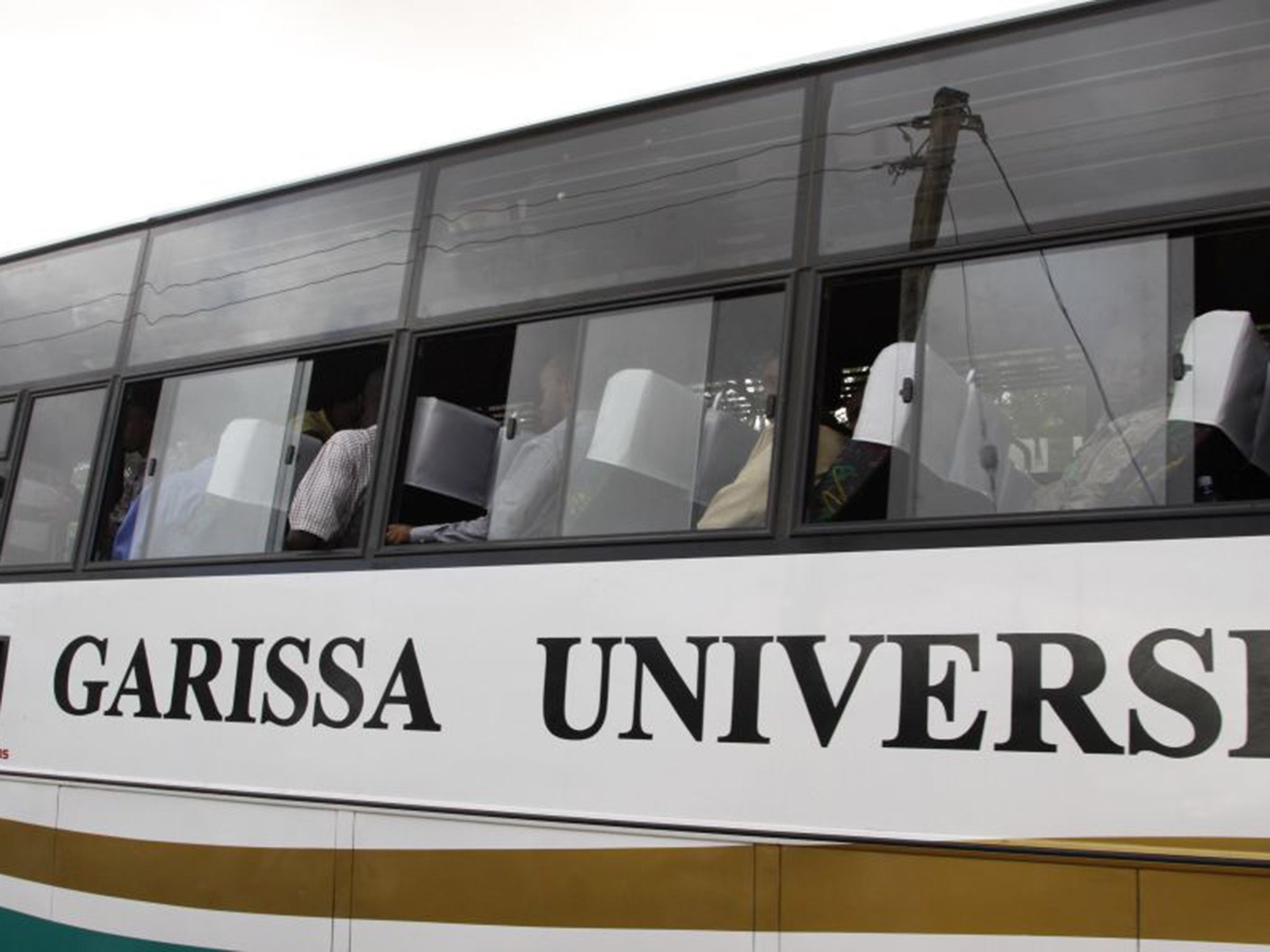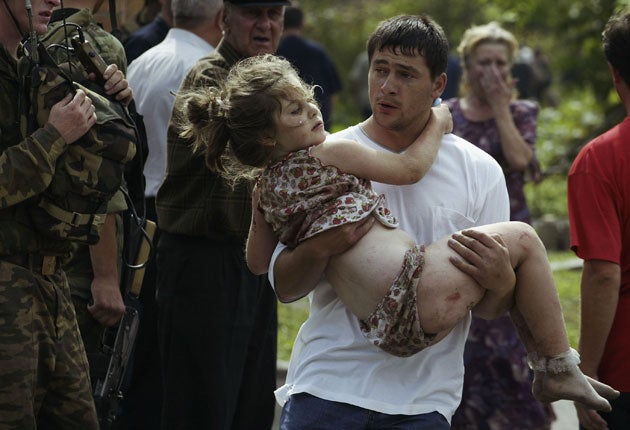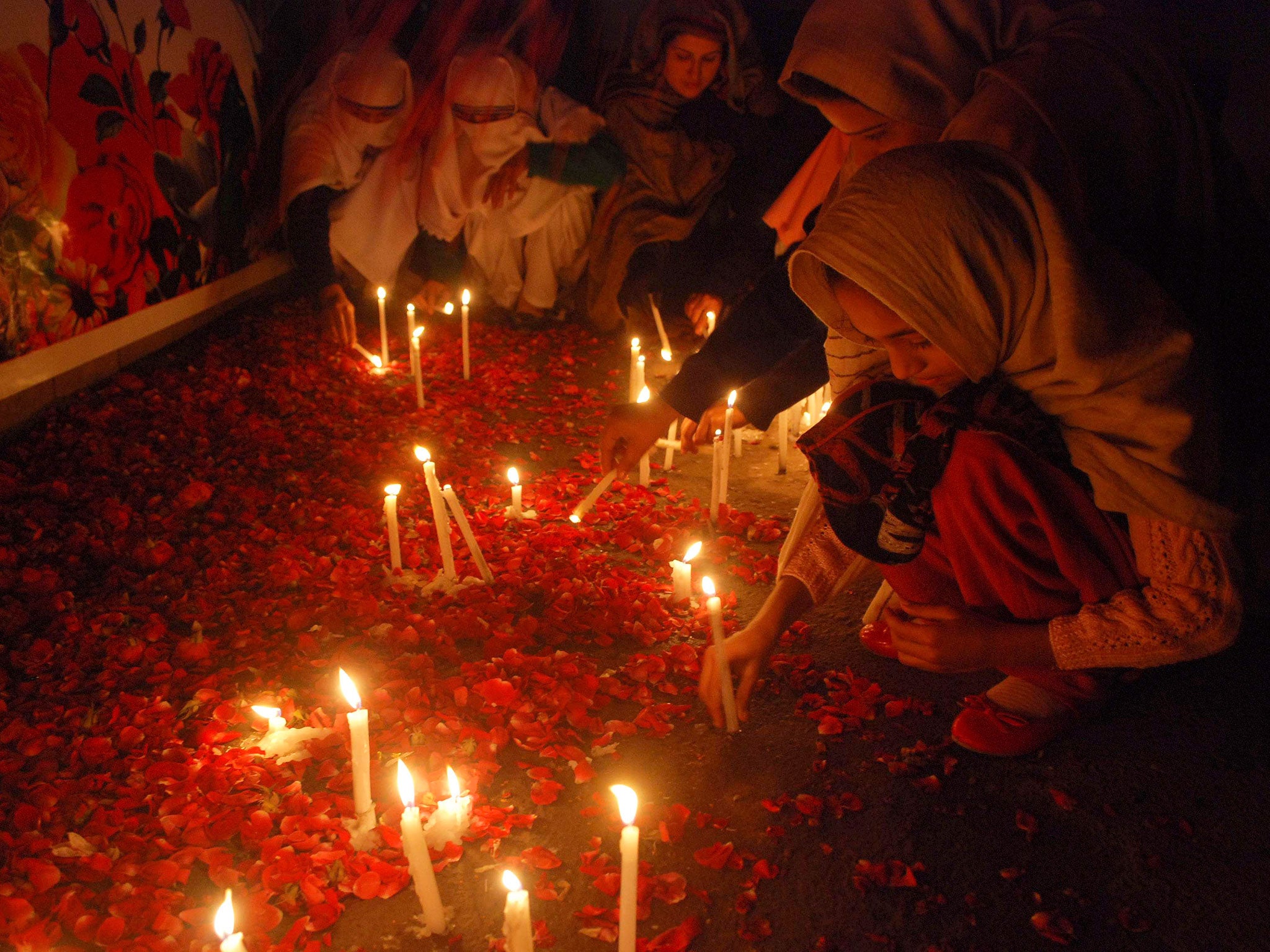The Garissa University attack reminds us that extremism and education don't mix
Terrorists depend on ignorance, which is why, increasingly, they target schools and colleges

What is it about places of education that makes them so tempting to terrorists? Thursday’s attack on Kenya’s Garissa University College by al-Shabaab militants from Somalia, in which at least 148 students died, was the worst act of terrorism in the country for 17 years. And yet the attack hardly came as a surprise – not even to the Kenyan authorities, who had been tipped off that an attack on “a major university” was in the offing, and had even put up notices warning students to be vigilant. The notices were ignored by some students, according to one report, because they thought they were an April Fool’s joke.
O tempora, o mores. For all the horror of the Garissa massacre, there is a ghastly, inuring sameness to it as a news story. The number of attacks on schools and colleges has increased so dramatically in the past 10 years that it has become a global terrorist cliché. According to new research by the University of Maryland, the rate is at its highest point in more than 40 years. Another report, produced by the New York-based Global Coalition to Protect Education from Attack, found that between 2009 and 2013, some 9,600 schools were targeted around the world; and in 30 countries, violence against them was a deliberate “tactic of war”.

The targeting of schools seems particularly favoured by Islamic extremists, although they hold no monopoly on the practice. School shootings have become a kind of cliché of Western culture, too, occurring about once every five weeks in America, according to gun control advocates. But it seems that, in a strange mirror of the culture across the Atlantic that they most decry, Islamists are also bowling for Columbine these days.
Nigeria’s Boko Haram, a movement that sees education as an agent of corruption in the rich south, has made a point of targeting schools since 2008. Their name, as all the world knows since their infamous abduction of more than 200 schoolgirls in the northern province of Borno, means “Books Forbidden” in the Hausa language. In October 2012, eight separate schools in Nigeria were burned down in a single night.
Worse even than Nigeria is Pakistan, where there is a particular and persistent objection to the education of girls, as the 2012 shooting of the schoolgirl Malala Yousafzai showed. In December 2014, for different, political reasons, the Pakistani Taliban infiltrated the Army Public School in Peshawar, killing 132 children between the ages of eight and 18. The deadliest act of terrorism in Pakistan’s history was reminiscent of the Beslan school massacre in North Ossetia in 2004, when Chechen Islamists killed 186 child hostages.
Schools, of course, make attractively soft targets for militants. Teachers and children, at least outside certain states in America, tend to be unarmed and unable to defend themselves. School perimeters are also not traditionally fortified, and their buildings hold high densities of people where a maximum amount of damage can be done in the shortest possible time. But this is also true of many other types of civilian target, including shopping centres, churches, hospitals, and tourist spots. All of these have been hit by Islamists in the past, including in Kenya. (The previous worst outrage in Garissa occurred three years ago, when al-Shabaab simultaneously attacked two churches, one Catholic, one Protestant; 17 worshippers died.) And yet, there is no particular trend for attacking these soft targets, either in Kenya or anywhere else. The spike on the terrorist target graph is exclusive to places of education. Why?
One reason, certainly in East Africa, may be changes to regional demography. As the populations of Muslim countries explode, the average age of their citizens comes down. In Somalia, the average age is now 17.7. This means that terrorists, like their victims, are getting younger by the day. Al-Shabaab, after all, means “the youth” in Arabic. An older terrorist, no matter how hardened or impassioned, may think twice before killing the innocent young, but not al-Shabaab, who have demonstrated countless times their willingness to exploit and abuse their own generation. To them, schools are fair game. It is revealing that of all the countries in the world, according to the Coalition to Protect Education, Somalia is the one where school pupils are likeliest to be forced into becoming soldiers. Compassion and morality count for little in such a war-ravaged society.
Secondly, al-Shabaab has reason to fear education, because it depends for its recruits on the ignorant and impressionable. In this, it is like any other extremist Islamist organisation. According to a report circulating in Mogadishu five years ago, al-Shabaab used to train up its young suicide bombers by showing them Bollywood videos, and telling them it was real footage from Paradise sent by past martyrs for the cause; if they followed their example, the trainers told them, then they too could expect to meet 72 virgins in the afterlife.

No student at Garissa University, with its mixed Muslim-Christian classes and its proud ambition to become a “world-class university of technological processes and development”, could ever fall for such a simple ploy. The university thus represents a direct threat to the interests of al-Shabaab, a quarter of whose recruits are thought to be of Kenyan origin. Established in 2011 by central government decree, the university is the only public institution of higher learning in Kenya’s north-east, a deprived area ethnically dominated by Somalis. There are, however, plans to establish sister campuses at five other towns across the region. No wonder al-Shabaab wants to destroy this outpost of enlightenment.
Education, it is worth mentioning, is one of the UK Department for International Development’s “strategic priorities” in Kenya, with a budget this year of almost £8m. DfiD has spent considerable sums on education programmes in Somalia, too. No British money has gone to Garissa University, because DfID’s focus in Kenya is on primary rather than higher education, but the point is the same: teaching children to think for themselves is one of our most potent weapons against religious extremism. Ukip’s Nigel Farage wants to reduce Britain’s national debt by cutting DfID’s foreign aid budget. With Islamists increasing their attacks on schools it suggests this would be a mistake.
James Fergusson is the author of 'The World’s Most Dangerous Place – Inside the Outlaw State of Somalia'

Join our commenting forum
Join thought-provoking conversations, follow other Independent readers and see their replies